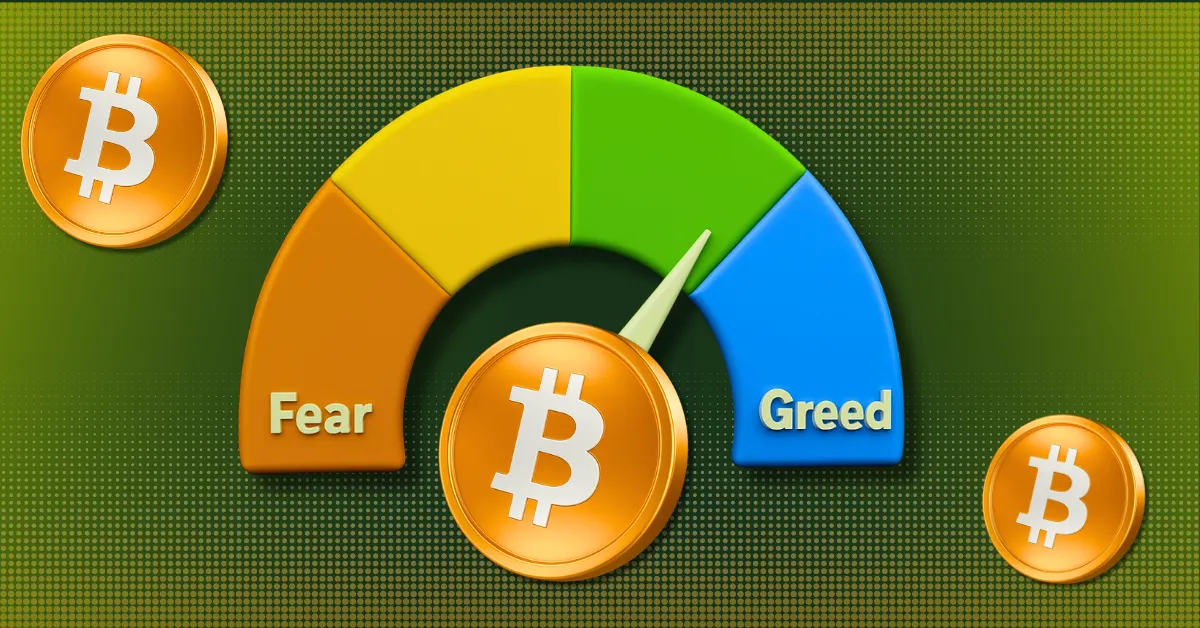Decoding Market Sentiment: The Crypto Fear & Greed Index Explained
The Emotional Pulse of the Crypto Market
Cryptocurrency markets operate in a realm where emotions often dictate price movements more than fundamentals. Unlike traditional markets, crypto is highly susceptible to sentiment shifts, making tools that measure investor psychology invaluable. The Crypto Fear & Greed Index serves as a sentiment barometer, quantifying the market’s emotional state to help investors make more informed decisions.
This index operates on a scale from 0 to 100, with lower numbers indicating fear and higher numbers signaling greed. The scale is divided into five distinct zones:
– Extreme Fear (0-24): This zone suggests panic in the market, often leading to undervaluation as investors rush to sell. Historically, these periods have presented buying opportunities as markets tend to rebound from such lows.
– Fear (25-49): A more moderate level of fear where investors remain cautious but not in full panic mode. This zone typically indicates a market that’s undervalued but not at its lowest point.
– Neutral (50-59): The middle ground where neither fear nor greed dominates. Markets in this zone are considered fairly valued according to current sentiment.
– Greed (60-74): Investors become increasingly optimistic, driving prices higher. While not necessarily a sell signal, this zone suggests markets may be becoming overvalued.
– Extreme Greed (75-100): Indicates market euphoria where assets are likely overvalued. This zone often precedes market corrections as investors chase prices higher without proper valuation.
The Anatomy of the Index: What Drives the Numbers
The Crypto Fear & Greed Index isn’t derived from a single data point but rather a sophisticated blend of multiple indicators, each contributing a different perspective on market sentiment. The typical composition includes:
This multi-faceted approach provides a more comprehensive view of market sentiment than any single indicator could offer alone.
Contrarian Investing: Going Against the Crowd
One of the most popular applications of the Fear & Greed Index is as a contrarian indicator. This strategy involves acting opposite to prevailing market sentiment, based on the principle that extreme emotions often lead to irrational pricing.
– Buying During Fear: When the index shows extreme fear, it suggests the market is oversold. Contrarian investors see this as an opportunity to buy undervalued assets before they rebound.
– Selling During Greed: Conversely, extreme greed signals may indicate it’s time to take profits, as markets may be overvalued and due for a correction.
However, this approach isn’t foolproof. Markets can remain in extreme sentiment states for extended periods, and the index is reactive rather than predictive. It’s most effective when combined with other analytical tools and a solid understanding of market fundamentals.
The Limitations and Nuances
While the Fear & Greed Index provides valuable insights, it’s not without its limitations:
– Reactive Nature: The index reflects current sentiment rather than predicting future movements. It’s a snapshot of the present, not a forecast.
– Prolonged Sentiment States: Markets can stay in fear or greed modes for extended periods, especially during strong bull or bear trends.
– Data Vulnerabilities: Some components, particularly social media sentiment, can be manipulated or influenced by external factors.
– Bitcoin-Centric: The index is heavily weighted toward Bitcoin sentiment, which may not accurately reflect the mood surrounding all cryptocurrencies.
– Regional Differences: Global sentiment may not account for localized market dynamics in different regions.
The Psychological Edge: Managing Investor Emotions
Perhaps the most valuable aspect of the Fear & Greed Index is its ability to help investors manage their own emotions. The crypto market’s volatility can trigger impulsive decisions that often lead to poor outcomes. The index serves as a reminder to:
– Avoid Panic Selling: During extreme fear, the index can help investors resist the urge to sell at the worst possible time, locking in losses.
– Resist FOMO: In periods of extreme greed, it can help investors avoid chasing prices higher based on hype rather than fundamentals.
– Maintain Perspective: The index highlights the cyclical nature of markets, reminding investors that both fear and greed are temporary states.
Conclusion: A Valuable Tool, Not a Crystal Ball
The Crypto Fear & Greed Index is a powerful tool for understanding market sentiment, but it’s not a guaranteed path to investment success. It should be viewed as one piece of a larger analytical puzzle, complementing technical and fundamental analysis.
At its core, the index serves as a reminder that markets are driven by human psychology as much as they are by economic fundamentals. By providing a quantitative measure of market emotions, it helps investors make more rational decisions in an often irrational environment.
The key to successful crypto investing lies in combining the insights from the Fear & Greed Index with a solid understanding of market fundamentals, disciplined risk management, and the emotional resilience to stick to one’s investment strategy through both fear and greed. In the volatile world of cryptocurrency, knowledge, patience, and emotional control are the most valuable assets an investor can possess.











